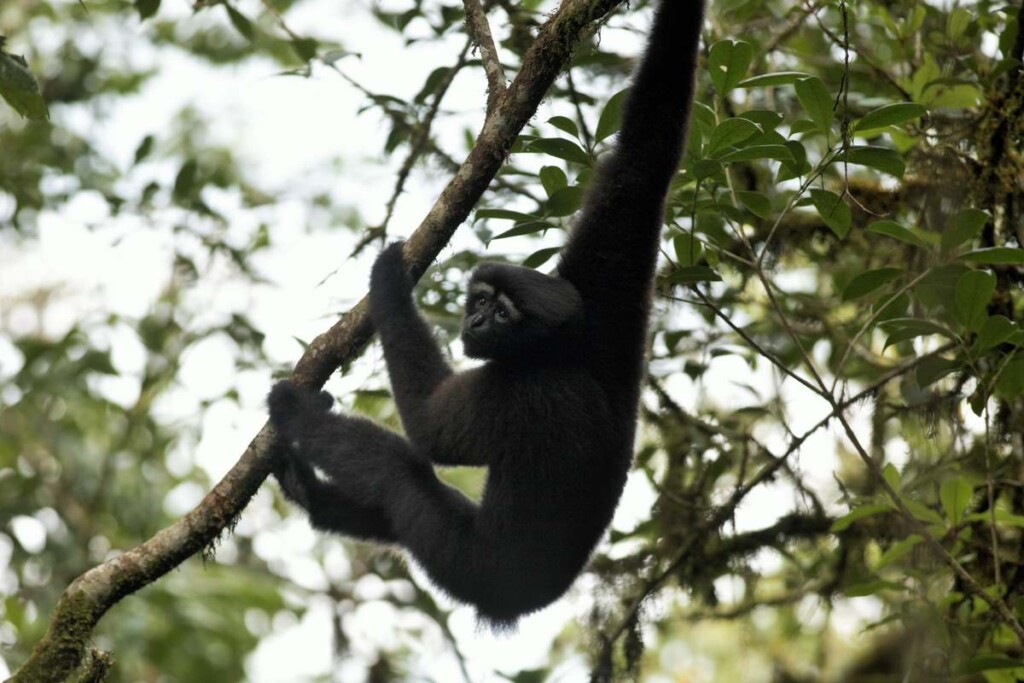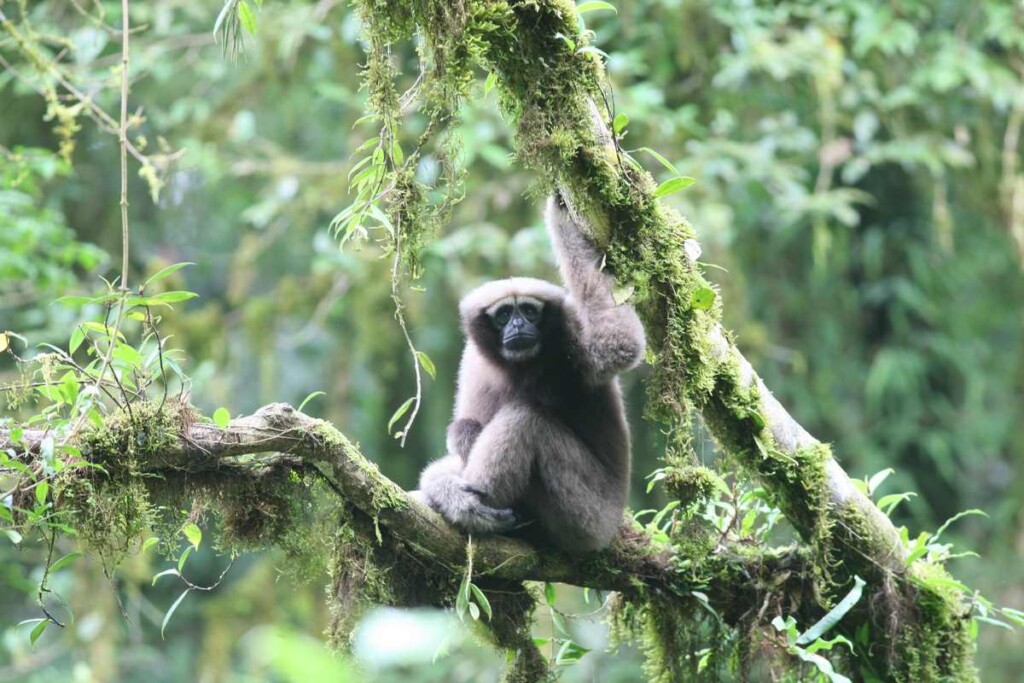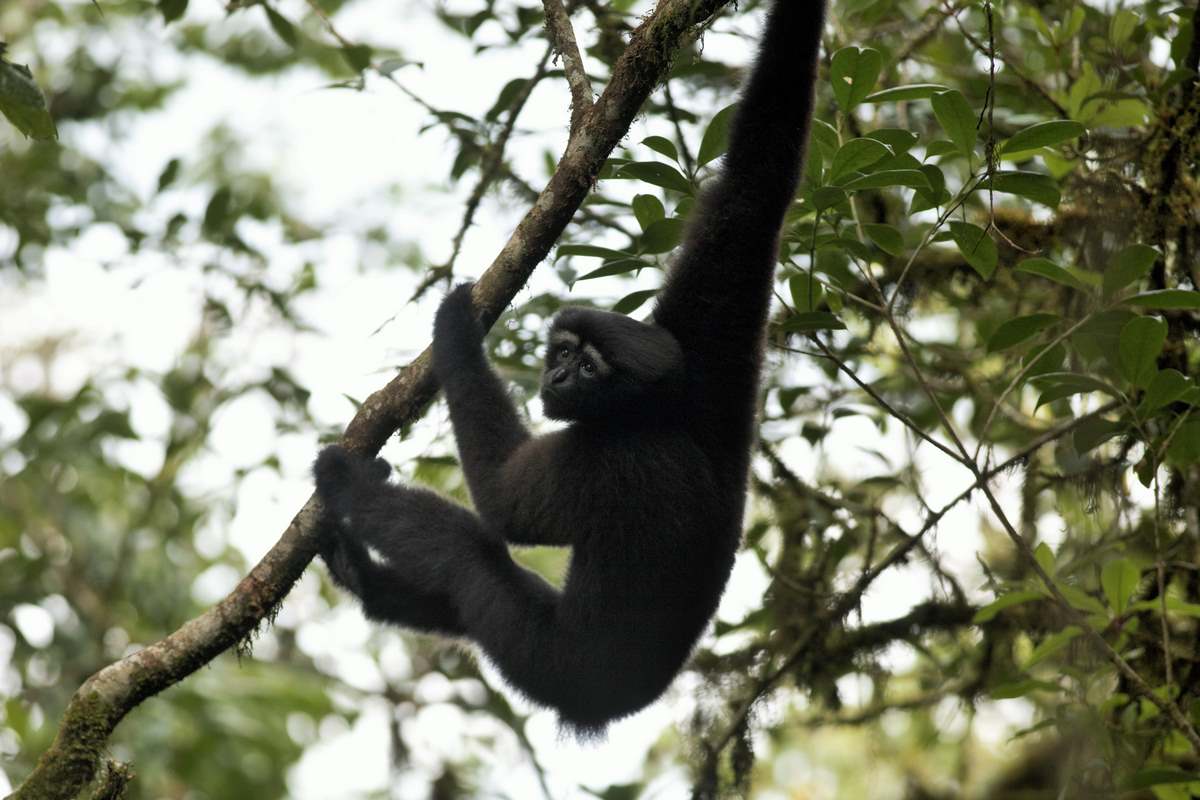
From the Far East comes fantastic news for species conservation after new populations of the gorgeous ‘Skywalker’ gibbon, known to science for only 6 years, were recently found living in the politically chaotic nation of Myanmar.
Also called the hoolock gibbon, this dainty vocalist was first described in 2017 living in the extreme south of China on a mountain in Yunnan. Classified as Endangered by the IUCN, the population was estimated to number a paltry 150 individuals, but others were believed to live in Myanmar.
Even before the recent military junta usurped the president and plunged the country into civil war, Myanmar was a difficult state to explore owing to the ongoing conflict between Yangon and several restive populations, in particular in the states called Shan and Kachin.
Now in open revolt against the military junta, these two states were nevertheless destinations for an intrepid team of scientists from the Nature Conservation Society Myanmar, Fauna & Flora International–Myanmar Programme, the IUCN’s ape specialist group, and field researchers from universities in England, China, and the US.
Together, they conducted acoustic surveys, collected non-invasive DNA sampling, and took photographs for morphological identification at six sites in Kachin State and three sites in Shan State. With the help of the Myanmar conservationists, the team also interviewed locals dwelling in rural forested areas, small conservation programs, and timber companies about the frequency of sightings and the hunting pressure.
Population estimates of unknown quality and scientific rigor conducted in 2013 suggested there might be 65,000 hoolock gibbons in Myanmar, but the matter became much more complicated after the classification of the Skywalker gibbon as a separate species from the eastern hoolock gibbon—where before they were confused as the same.

“We were able to genetically identify 44 new groups of Skywalker gibbons in Myanmar,” said senior author Tierra Smiley Evans, research faculty at the UC Davis School of Veterinary Medicine, and contributing author. “This is a huge resource and success story for Myanmar.”
These gibbons sing to each other at dawn for around 22 minutes, and consume 36 different plant species; choosing fruit first, and flowers later. They seldom sleep in the same tree two nights in a row to avoid predation, and can’t swim so are often confined to territories by river systems.
The team that discovered them in China in 2017 loved Star Wars, and called them tianxing which is Chinese pinyin for “heaven movement;” a nod not only to their favorite sci-fi franchise, but also to China’s ancient history. In the famous Book of Change of the Zhou Dynasty, a divination poem refers to gibbons specifically, and uses tianxing as a verb to describe their movements.
The interviews were a source of great data for the scientists. For starters, nearly all individuals in both the Kachin and Shan states could identify a Skywalker gibbon by sight and by playback of its singing, lending the exercise a good degree of reliability.
OTHER JUNGLE DISCOVERIES: Astonishing ‘Fairy Lanterns’ Found Growing in the Darkest Depth of Malaysian Rainforest
Villagers located in the non-protected forest reserve of Mae Nei Taung, for example, were almost all Buddhist and reported a diminishing presence of gibbons but no local hunting of gibbons whatsoever, in addition to the existence of social taboos toward hunting them.
By contrast, in the villages of the forest reserve of Paung Laung, which were half Christian, and half Buddhist, 46% of interviewed villagers reported that people hunted gibbons around Paung Laung. Of the 34 respondents who described their perceptions of causes of gibbon decline, 85% of respondents considered that forest cover had decreased locally in both reserves.
“Biologists did not believe Skywalker gibbons could live in the small remaining patches in Southern Shan State before we started this project,” Pyae Phyo Aung, executive director of Nature Conservation Society Myanmar, told the UC Davis press.
MORE MONKEY NEWS: This Monkey Was Already Endangered When Discovered in 2003–but is Now on the Up and Up
“I am delighted with our field team members who have done an excellent job, within a short period of time, building community trust for further conservation actions. This area is degraded forest. It is really important for Myanmar and China to consider extending conservation approaches for the Skywalker gibbon to this new geographic area.”
Nearly 32,000 square kilometers, or around 8 million acres of forestland in Eastern Myanmar are suitable gibbon habitat, and while existing forest reserves like Paung Taung and Mae Nei Laung are quite large, they remain unprotected. For this reason, the survey team recommended they remain considered ‘Endangered’ on the IUCN Red List until habitat protections improve.
SHARE This Great News About The Skywalkers Return…




















